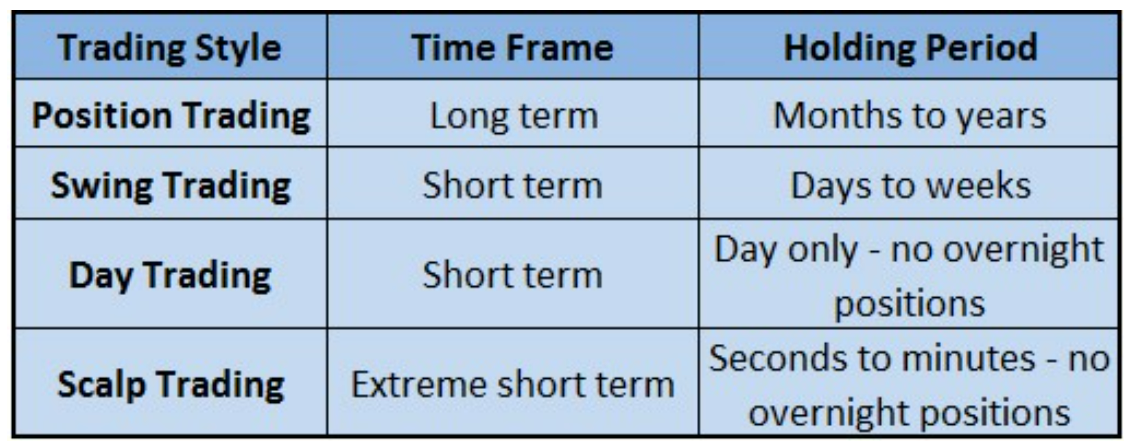How long do day traders hold positions?

Day trading is a highly speculative activity that involves buying and selling of financial instruments within the same trading day. In other words, a day trader has opening positions in the morning and closes them before the market closes. The idea behind day trading is to make profits on small price fluctuations within a short period.
Day traders use a variety of strategies to identify price movements and enter trades. However, one important aspect of day trading is the holding period of a position. How long do day traders hold positions?
In this article, we will explore the holding period of day traders and discuss some of the factors that influence the duration of a trade.
Factors That Influence the Holding Period of a Trade
Several factors influence the duration of a trade in day trading. Let’s discuss some of these factors below.
- Market volatility: One of the primary factors that influence the holding period of a trade is market volatility. When the market is highly volatile, day traders tend to hold their positions for shorter time frames to avoid losses.
- Trading style: Day traders have different trading styles, and some prefer to hold positions for a few seconds, minutes, or hours. The holding period varies depending on the trading style and the strategy used.
- Risk tolerance: Risk tolerance is another important factor that determines how long a day trader holds a position. Some traders are comfortable taking high risks and hold positions for longer periods, while others are risk-averse and tend to exit trades quickly.
- Trading instrument: The trading instrument also plays a role in determining the holding period of a trade. For instance, forex currency pairs are highly liquid and have low trading costs, making it easier for day traders to hold positions for longer periods. On the other hand, stocks and futures contracts have higher trading costs and may not be suitable for long-term holding.
How Long Do Day Traders Hold Positions?
The holding period of a day trade varies from trader to trader and is dependent on several factors such as market volatility, trading style, risk tolerance, and the trading instrument. In general, day traders tend to hold positions for a few minutes to a couple of hours.
Scalping
Scalping is a popular day trading strategy that involves quickly buying and selling financial instruments within a few seconds to a few minutes. Scalpers aim to make small profits on frequent trades, holding positions for just a few seconds.
Intraday Trading
Intraday trading involves entering and exiting trades within the same trading day without holding overnight positions. Intraday trading can involve various holding periods, ranging from a few minutes to a few hours. Intraday traders aim to profit from small price movements within the day.
Swing Trading
Swing trading is a trading strategy that involves holding positions for longer periods than day trading, ranging from a few days to a few weeks. Swing traders aim to capture larger price movements in the market and may hold overnight positions.
FAQs
What is the holding period for day trading?
The holding period for day trading varies from trader to trader and is influenced by several factors such as market volatility, trading style, risk tolerance, and the trading instrument. In general, day traders tend to hold positions for a few minutes to a couple of hours.
Can day traders hold positions overnight?
No, day traders do not hold overnight positions as they aim to close all positions within the same trading day. Holding overnight positions can expose day traders to additional risks, such as market gaps and overnight news events.
What is scalping in day trading?
Scalping is a popular day trading strategy that involves quickly buying and selling financial instruments within a few seconds to a few minutes. Scalpers aim to make small profits on frequent trades, holding positions for just a few seconds.
What is swing trading in day trading?
Swing trading is a trading strategy that involves holding positions for longer periods than day trading, ranging from a few days to a few weeks. Swing traders aim to capture larger price movements in the market and may hold overnight positions.
Conclusion
Day traders have different trading styles and holding periods depending on various factors such as market volatility, trading style, risk tolerance, and the trading instrument. While day traders tend to hold positions for a few minutes to a couple of hours, scalpers hold positions for just a few seconds, while swing traders hold positions for several days. Knowing how long to hold positions and when to exit is a critical aspect of day trading that can make the difference between profits and losses.